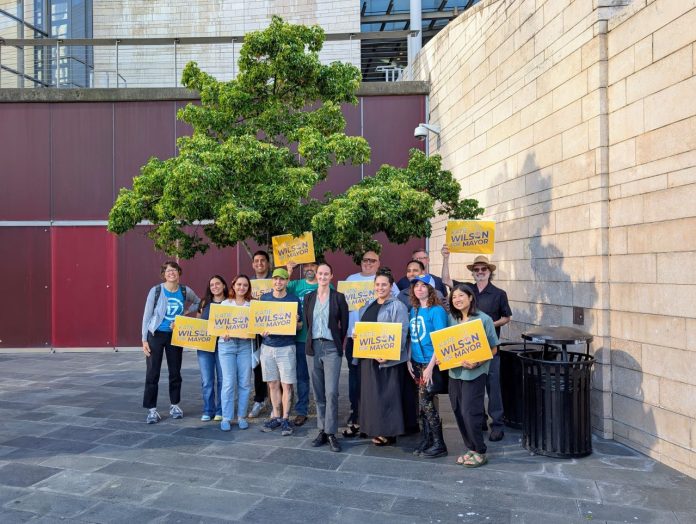
Recent ballot drops have been very friendly to Seattle progressives, with mayoral challenger Katie Wilson exceeding the 50% mark after Friday’s batch was tallied. By Monday, her lead had grown to 9.5 points, giving Wilson a serious advantage as she heads into a general election rematch with incumbent Mayor Bruce Harrell, who is sitting at 41.2% of the primary vote.
The Urbanist Elections Committee (on which I serve) endorsed Wilson, who is long-time leader of the Transit Riders Union. The Urbanist slate of Seattle City Council candidates also did very well in the primary. Alexis Mercedes Rinck (Position 9), Dionne Foster (P9), and Eddie Lin (D2) all have commanding leads over more conservative opponents. Likewise, Seattle City Attorney challenger Erika Evans (who The Urbanist endorsed) is up big over incumbent Ann Davison, who is the only Republican in elected office in Seattle.
On election night, Wilson led by 1.4 points, but later drops have favored Wilson more heavily. It was a result that rocked the Democratic party establishment, much of which has been backing Harrell. However, two recent polls from the Northwest Progressive Institute did predict Harrell was in trouble, running neck and neck with Wilson and well below water when it comes to voter favorability.
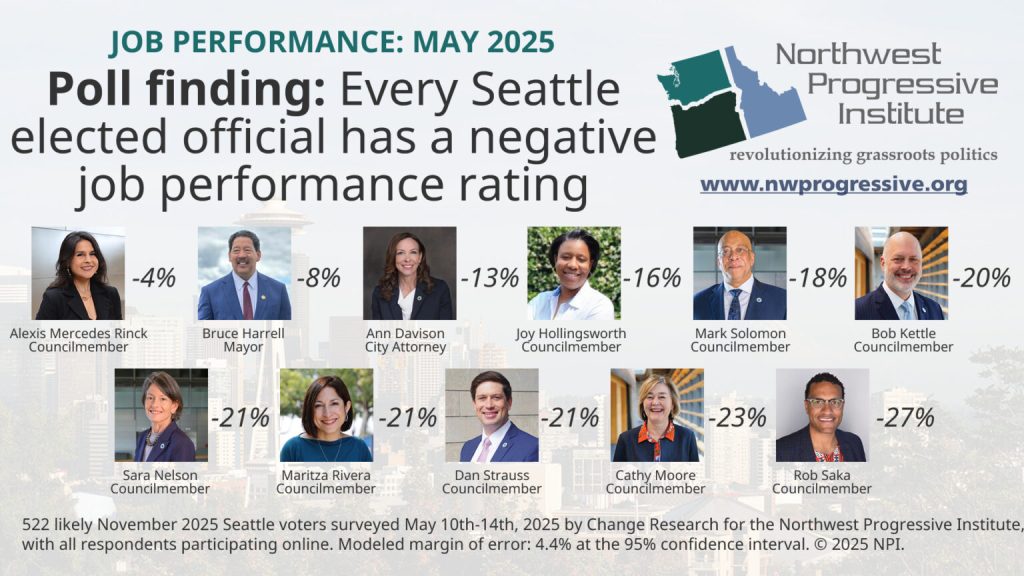
Approximately 16,000 votes remain to be counted in Seattle after Friday, but most of those votes were counted Monday. Wilson won among the ballots added Friday by a nearly two-to-one margin over Harrell: 60% to 32%.
Ballot count update: Katie Wilson is now up 9.5 points on incumbent Seattle Mayor Bruce Harrell, as late returns continue to break her way. She has 50.7% of the primary vote, giving her a decided edge in a general election face-off with Harrell.
— The Urbanist (@theurbanist.org) August 11, 2025 at 3:47 PM
[image or embed]
King County Elections has released precinct level results covering only Primary night data. Wilson’s late charge will make the final map look different, with more precincts likely flipping toward her.
However, the early snapshot does paint a familiar picture; Wilson dominated Seattle’s apartment-heavy urban neighborhoods. Harrell, meanwhile, prevailed in the more suburban waterfront view corridors where moderates and conservatives generally tend to do well. Northeast Seattle, Montlake, and mansion-dotted coastal slopes in places like Magnolia and West Seattle went to Harrell. Wilson took most other areas, particularly if they were dense and middle class.
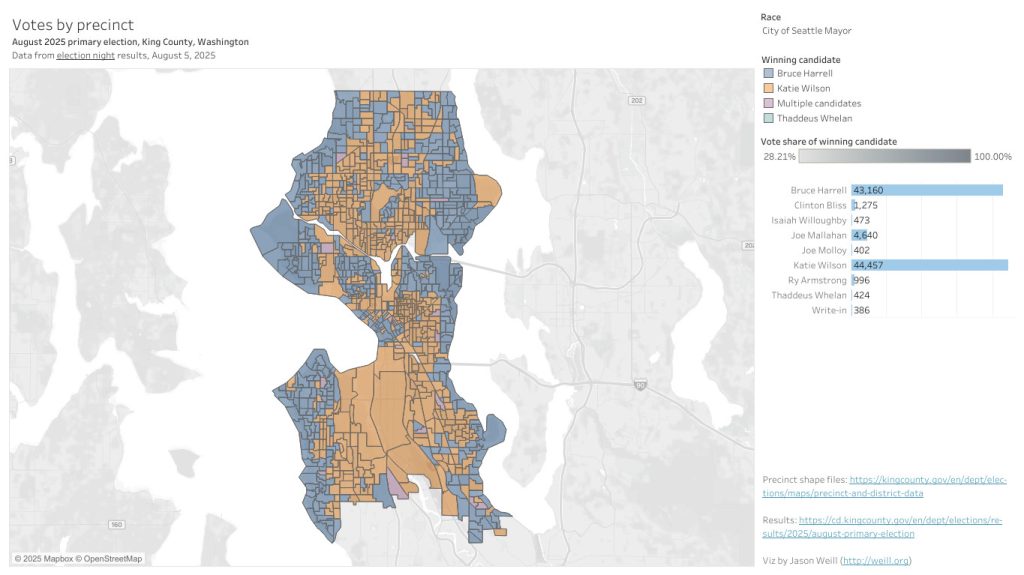
This primary results map looks very similar to past maps, but Wilson’s domination of Seattle urban centers was more extensive than progressives that came up short. This partially could be a reflection of how Seattle is changing and growing. The vast majority of Seattle’s population growth has been in the city’s urban core and centers that are rapidly adding apartments — by and large voters and precincts that progressives win.
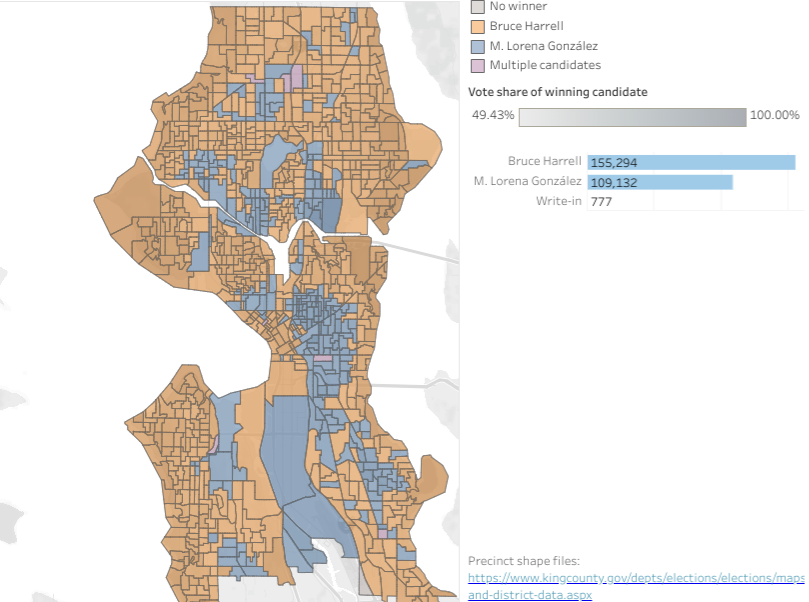
But the key to Bruce Harrell’s 2021 election rout was his domination of the “gentle density” zones between the densest urban centers. These townhome-heavy precincts normally are fertile ground for successful progressives like Teresa Mosqueda and more recently Alexis Mercedes Rinck. Harrell made big inroads in 2021, but they’ve swung back to progressives this time around in boomerang fashion.
If Harrell can’t improve with this class of voter in November, he appears cooked. The question of what inspired voters in these precincts to flip sides is the point of much debate.
What went wrong for centrists
The affordability wedge issue hypothesis has come to the forefront this election, much to the detriment of centrists, who seem to have lost trust with voters after focusing on rolling back worker protections and avoiding tax hikes on corporations and the mega-wealthy. Spending the last three and a half years as such, Harrell and Nelson ended up cementing a brand of fighting for the rich, rather than for the average working Seattleite struggling to make ends meet. Harrell has not acted with a sense of urgency around housing. His big zoning update with his “One Seattle” growth plan is more than a year behind and has been repeatedly watered down to offer fewer housing opportunities outside of existing centers.
Meanwhile, the Trump hypothesis holds that Seattle voters want candidates that will stand up to Trump and fight federal overreach. Seattle overwhelmingly voted against Trump, but Mayor Harrell took a more conciliatory tone early in Trump’s administration, saying he’d work with them. As a Republican active in the “Walk Away” movement (which sought to convert Democrats to voting for Trump), Davison’s credibility on fighting Trump was low.
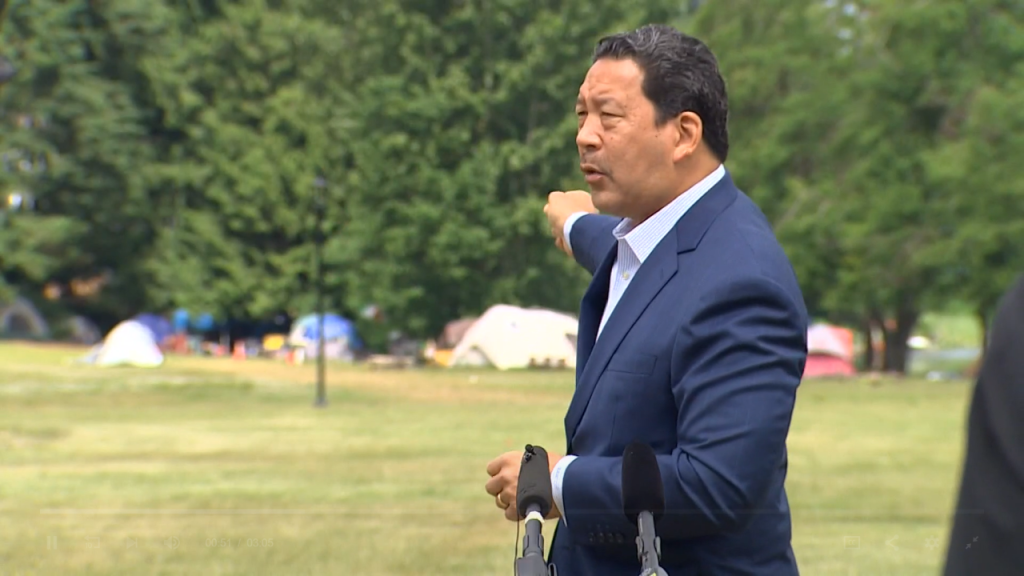
The vibes-cession theory – Harrell’s big win in 2021 was attributed to his mastery of riding the zeitgeist, laying on thick the vibe that he could return a sense of normalcy in a pandemic-shaken electorate. But the vibes of being a no-nonsense outsider evaporated over the course of his term, partially because it was an illusion for a long-time politician that had served three terms on City Council.
The freshness of the vibes were weighed down by the turmoil in his administration, which included a falling out with his own niece, who had served as his senior deputy mayor. In a 2025 interview, Monisha Harrell revealed that women were not taken seriously in his cabinet — and were sometimes undermined and subjected to harassment. That revelation contributed to a sense that he was failing to reform the Seattle Police Department, which has a goal of reaching a 30% female workforce by 2030, but is making scant progress toward that goal.
Broken pledges theory – Seattle’s anti-incumbent mood could also be traced to a feeling that the current crop of leaders broke their campaign pledges. With his aggressive 2021 campaign rhetoric, voters may have had the impression that Harrell and his allies were going to make homeless encampments and crime disappear. That didn’t happen. Harrell tried to take credit for decreasing murder rate (which mirrored national trend), but voters did not seem impressed. And on homelessness, he clearly fell short. Encampment sweeps are way up, but rather than adding his promised 2,000 units beds, shelter space has actually shrunk under Harrell’s watch. In practice, this has meant encampments have shuffled locations rather than disappeared altogether, despite the huge investment in conducting sweeps.
For her part, Nelson didn’t exactly run on reducing wages for gig workers and blocking progressive revenue sources. Plus, the centrists essentially all ran as collaborators who would restore a sense of professionalism to city hall. Instead, Nelson oversaw a workplace that appears so toxic that two councilmembers have resigned in the last year, one an ally of hers.
Wilson is a strong candidate who is resonating
The flip side of Harrell’s weaknesses being revealed is Wilson’s strength and resonance with voters. Harrell is facing a dynamic candidate who doesn’t have a record in elected office that he and his allies can easily twist into liabilities, as he did with Lorena González in his previous mayoral run. Streetsblog’s Kea Wilson (no relation to Katie) pointed out that Wilson is part of a growing trend of transit-friendly candidates pulling out political upsets. These rising stars include Boston’s Michelle Wu, New York’s Zohran Mamdani, and Detroit’s Mary Sheffield.
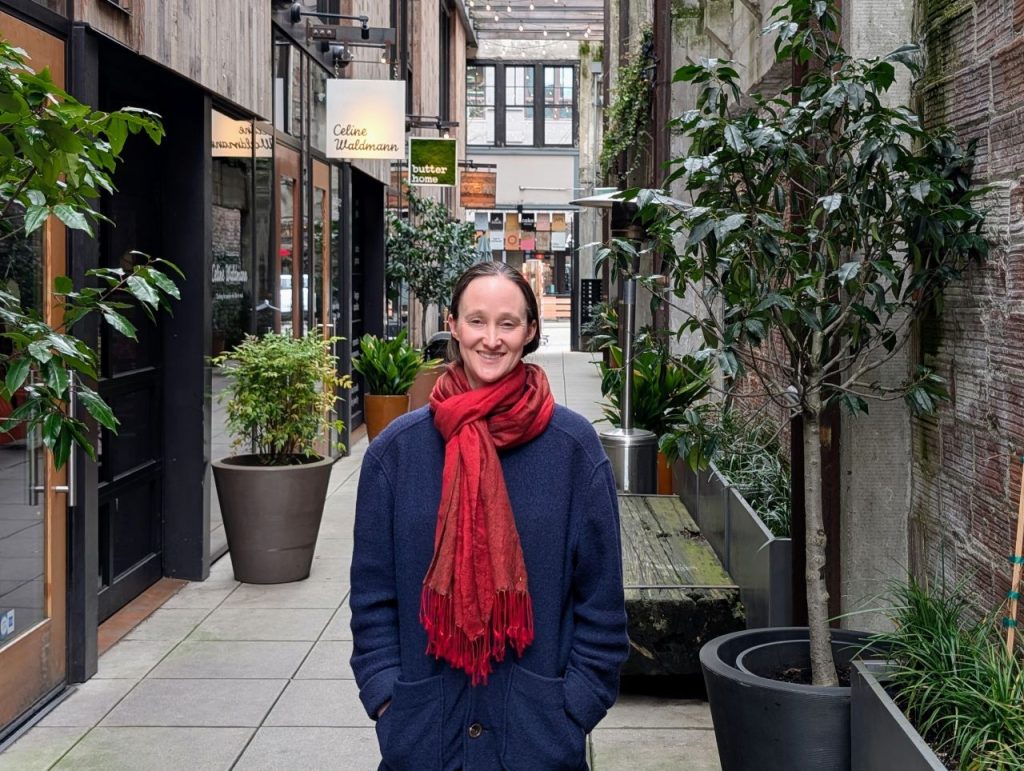
“While some local opinion writers have dubbed Katie Wilson ‘the Zohran Mamdani of Seattle,’ others argue she represents her own archetype of the urbanist-as-political candidate: the ‘bus-riding mama who gets shit done,'” as Tom Fucoloro of Seattle Bike Blog memorably wrote,” Kea Wilson wrote. “On the ‘gets shit done’ side of the coin, advocates have praised Wilson as an unsung hero of many key transit initiatives, co-founding coalitions that helped add bus and bike lanes to major projects and winning low-income fare programs that have been a lifeline to working families. That impressive track record, her supporters say, is a sign that Wilson has not just the aspirations of a great transit mayor, but skills to actually make it real.”
A transit-riding, renter mother who has fought for 15 years to make the city more affordable is more relatable than a former football star turned star lawyer who owns a multi-million-dollar just steps away from Seward Park and Lake Washington. Beyond not giving off millionaire vibes, Wilson’s campaign credited her clear transit stances with firing up voters.
“We absolutely think that our emphasis on transit-related issues was a big part of the success in the primary,” Alex Gallo-Brown, campaign manager for Wilson for Seattle, told Streetsblog in a statement. “Many people in Seattle are hungry for a city that doesn’t require car dependency in order to live a good life.”
Just before the primary election started, Wilson participated in an event where hundreds of transit advocates raced the infamously slow Route 8 bus on traffic-snarled Denny Way. The event made a splash, earning several stories in local media, including a KUOW public radio segment. The upshot was clear: Wilson cares about transit riders and fixing their commutes. Harrell was missing in action.
While Wilson endorsed Seattle’s social housing funding measure, which prevailed in a 26-point victory in a February special election, Harrell was the literal face of the opposition, appearing prominently in mailers. Wilson credited that special election with inspiring her to jump into the race, despite many political operatives painting Harrell as inevitable and nearly invincible at that point. The Prop 1A misstep revealed Harrell to be out of step with voters on housing issues, while giving Wilson credibility as an early supporter of the city’s fledgling social housing effort.
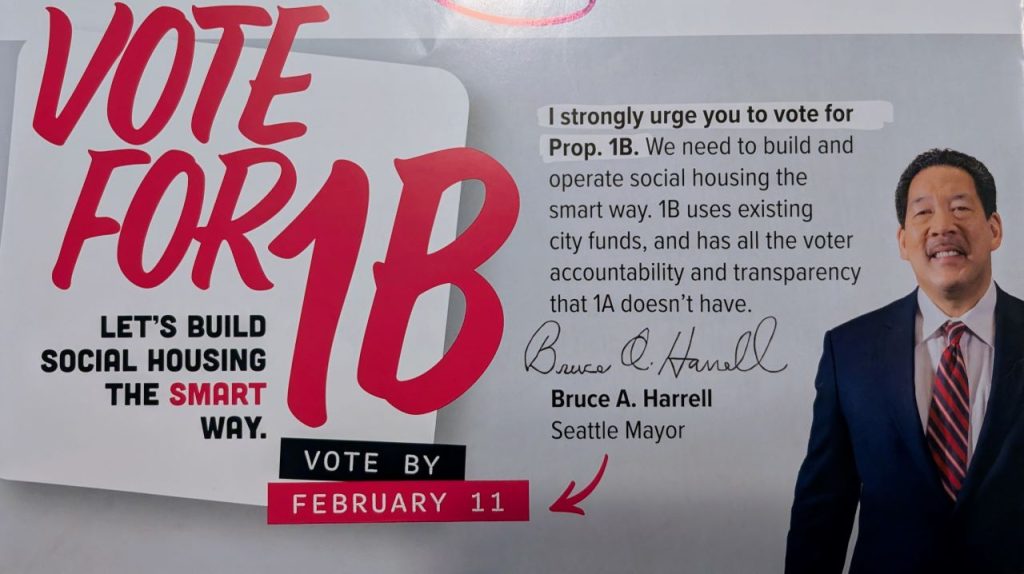
Wilson’s campaign volunteers reported that cost of living issues are top of mind for voters they talked to at farmers markets and other canvassing events. On primary election night, volunteer Harrison Jerome told The Urbanist that voters also didn’t trust Harrell on those issues.
“[Inflation] and rent being high, that’s something that young people talk a lot,” Jerome said. “When we talk about things like affordability and housing, they don’t think that Bruce Harrell has done that much for the city. Most people get the sense that he has sort of a do-nothing mayor. He just hasn’t done much, and he will probably continue to do nothing if he’s reelected, and he hasn’t earned their vote.”
Foster opens up 22-point lead over Nelson
Other progressives had similar maps. Foster dominated centrist incumbent Nelson to an even greater degree, opening up a 23-point lead by Monday. The pockets of support for Nelson are even more limited to the coastal precincts and mansion slopes.
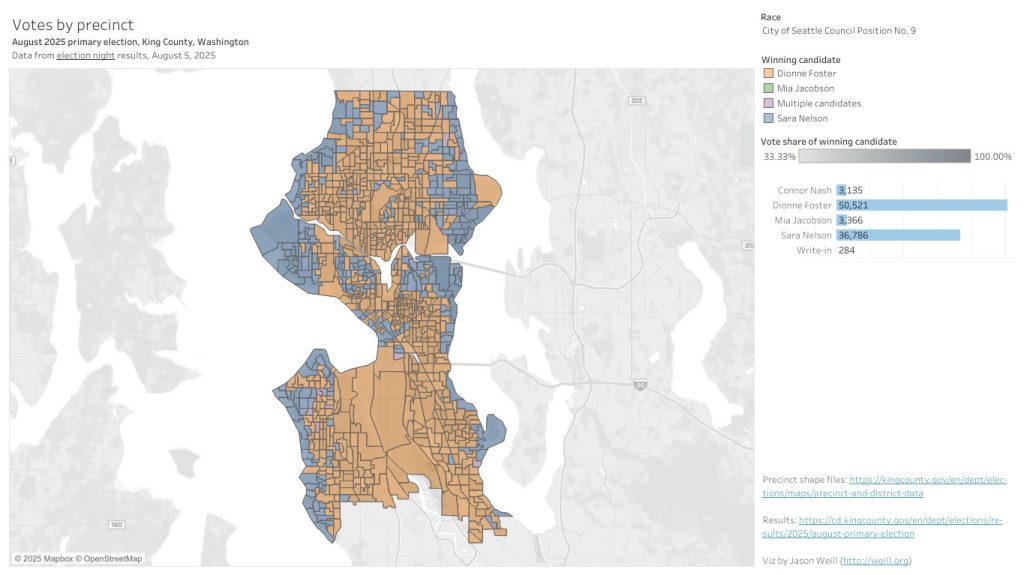
Councilmember Rinck’s map was striking. She won nearly everywhere. The exceptions were two of Seattle’s most exclusive neighborhoods: Broadmoor (a gated community enveloped in a private golf club) and Windermere. These apparently are the districts where a Republican (Rachael Savage) can best a popular progressive. Rinck’s margin spiked even more in later returns. By Monday, she had claimed 78% of the primary vote.
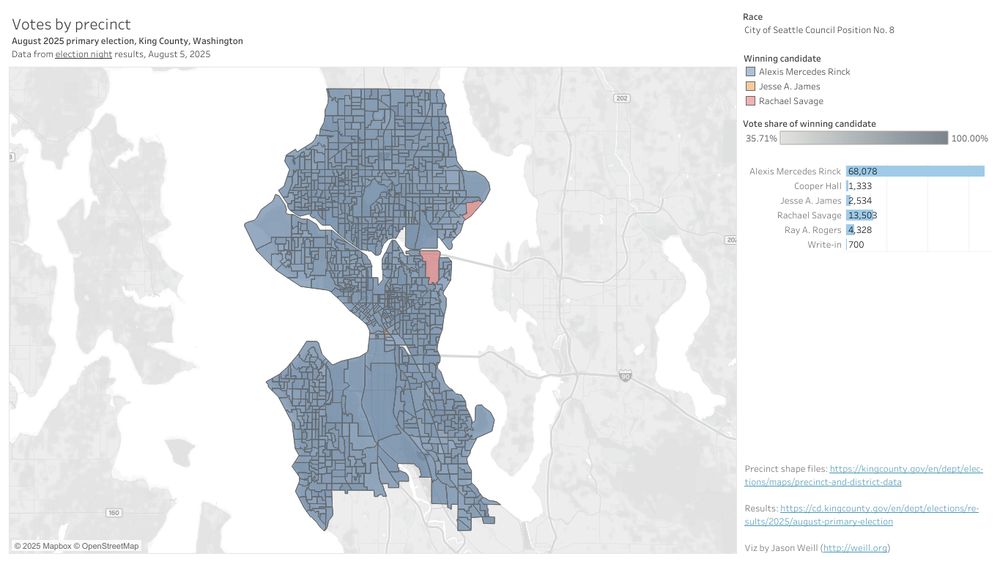
Meanwhile, Lin has 47% of the vote, and Evans nearly 56%. Lin heads into the general election with a 18-point lead over second place finisher Adonis Ducksworth. Evans has a 22-point lead over Davison.
Progressives still have to repeat their dominant performances in November or the primary wins won’t mean much. Big business may be motivated to spend big to try to swing the election their way and keep more tax-averse leaders in office. But clearly progressives start in an enviable position. The electorate seems primed to put them office. Now, they just have to close the deal.
Doug Trumm is publisher of The Urbanist. An Urbanist writer since 2015, he dreams of pedestrian streets, bus lanes, and a mass-timber building spree to end our housing crisis. He graduated from the Evans School of Public Policy and Governance at the University of Washington in 2019. He lives in Seattle's Fremont neighborhood and loves to explore the city by foot and by bike.

